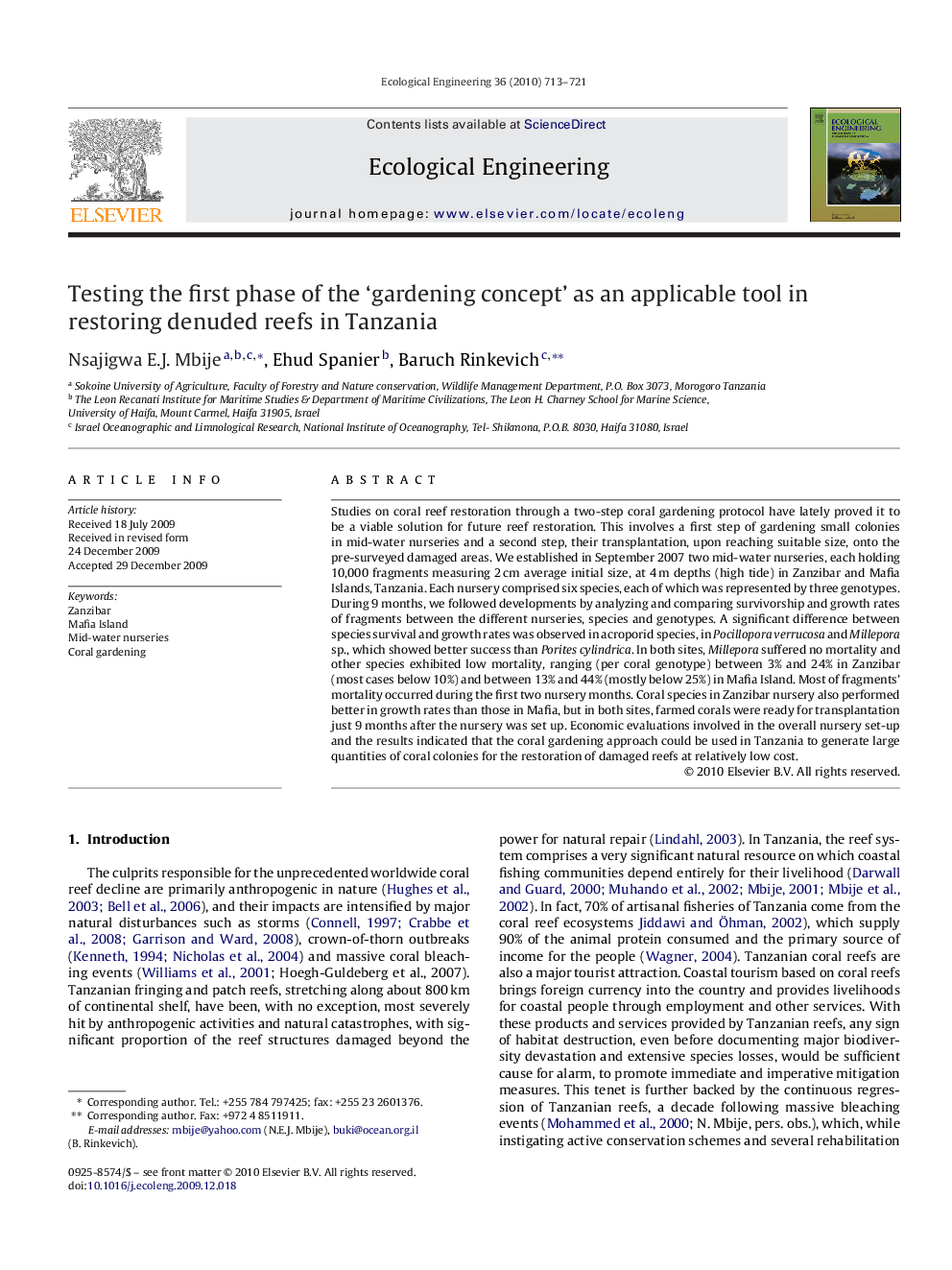| Article ID | Journal | Published Year | Pages | File Type |
|---|---|---|---|---|
| 4390636 | Ecological Engineering | 2010 | 9 Pages |
Studies on coral reef restoration through a two-step coral gardening protocol have lately proved it to be a viable solution for future reef restoration. This involves a first step of gardening small colonies in mid-water nurseries and a second step, their transplantation, upon reaching suitable size, onto the pre-surveyed damaged areas. We established in September 2007 two mid-water nurseries, each holding 10,000 fragments measuring 2 cm average initial size, at 4 m depths (high tide) in Zanzibar and Mafia Islands, Tanzania. Each nursery comprised six species, each of which was represented by three genotypes. During 9 months, we followed developments by analyzing and comparing survivorship and growth rates of fragments between the different nurseries, species and genotypes. A significant difference between species survival and growth rates was observed in acroporid species, in Pocillopora verrucosa and Millepora sp., which showed better success than Porites cylindrica. In both sites, Millepora suffered no mortality and other species exhibited low mortality, ranging (per coral genotype) between 3% and 24% in Zanzibar (most cases below 10%) and between 13% and 44% (mostly below 25%) in Mafia Island. Most of fragments’ mortality occurred during the first two nursery months. Coral species in Zanzibar nursery also performed better in growth rates than those in Mafia, but in both sites, farmed corals were ready for transplantation just 9 months after the nursery was set up. Economic evaluations involved in the overall nursery set-up and the results indicated that the coral gardening approach could be used in Tanzania to generate large quantities of coral colonies for the restoration of damaged reefs at relatively low cost.
